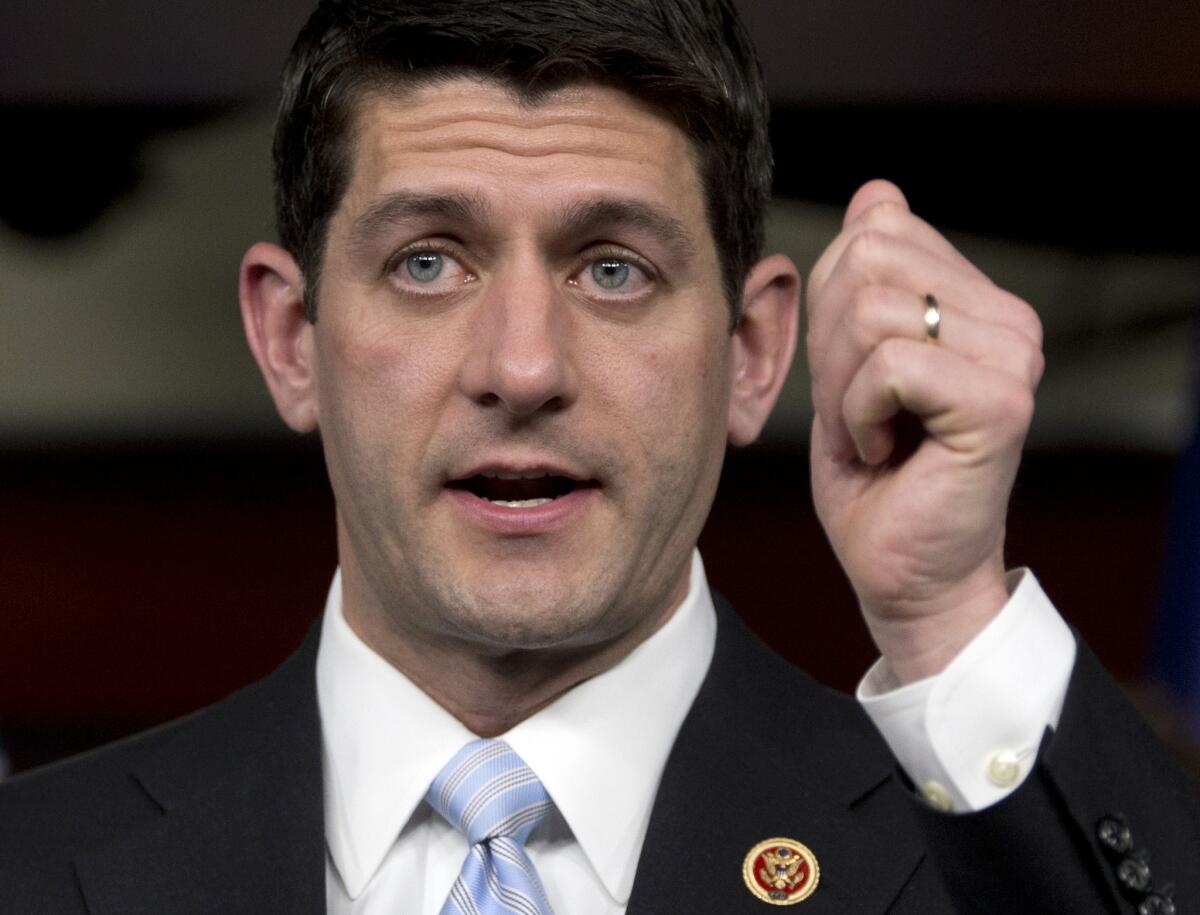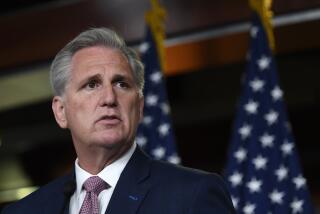The Medicare debate we need

- Share via
One criticism of the Medicare overhaul that House Budget Committee Chairman Paul D. Ryan (R-Wis.) has championed is that it would shift more and more of the program’s costs onto seniors. In the latest version of his plan, Ryan acknowledges that capping the growth of the program could, in fact, make health insurance more expensive for some retirees. But that’s part of the point of the change, which would concentrate Medicare spending on the poorest and sickest seniors.
This page has argued that Ryan’s overhaul goes too far, threatening Medicare’s fundamental promise of affordable health insurance for all seniors. But the questions he poses about who the government subsidizes and to what end are the kind of debate that Congress can’t afford to duck.
Ryan wants to transform Medicare from a health insurance plan into subsidies for coverage, starting with those who become eligible for the program in 2023. Seniors would shop for insurance at a new Medicare exchange, where private insurers would offer standardized plans alongside the government’s traditional Medicare coverage. The subsidies would be large enough to pay for the second-least-expensive plan, with a notable caveat: The subsidies could not grow more than half a percentage point faster than the economy as a whole. If the subsidies didn’t keep up with the increase in premiums — and they wouldn’t, if Medicare costs grow at the same rate they did in the 1990s and 2000s — the government would increase its aid to the poorest and sickest beneficiaries to cover their out-of-pocket costs. Everyone else would have to pick up a larger share of the tab.
The federal government has been heading in this direction for a decade, requiring higher-income seniors to pay larger premiums for the portions of Medicare that cover doctor visits and prescription drugs. Ryan would go one step further, offering a smaller benefit to those with a greater ability to pay for it. That runs counter to Medicare’s social insurance model, in which everyone who pays into the program receives the same benefits regardless of their income. But that model was created at a time when there were far fewer retirees; in 1965, there were more than 4 1/2 workers paying into Medicare for every person collecting benefits from it. The retirement of the baby boom generation will nearly double the number of people on Medicare, leaving fewer than 2 1/2 workers for each beneficiary.
Some opponents of the Ryan plan argue that Congress should focus on fixing inefficiencies and misplaced incentives that plague the entire healthcare system. They also argue that Medicare doesn’t need radical change; the growth in its costs per beneficiary slowed dramatically in the last three years, increasing only 0.4% in 2012. The Obama administration credits the 2010 healthcare reform law for that; more skeptical analysts warn that it may be just a temporary break. Regardless, the flood of new retirees is going to strain the federal budget no matter how slowly the cost per Medicare recipient grows. Even if lawmakers don’t like Ryan’s proposed answers, they still have to grapple with the questions he asks about the sustainability of the Medicare model.
More to Read
A cure for the common opinion
Get thought-provoking perspectives with our weekly newsletter.
You may occasionally receive promotional content from the Los Angeles Times.










